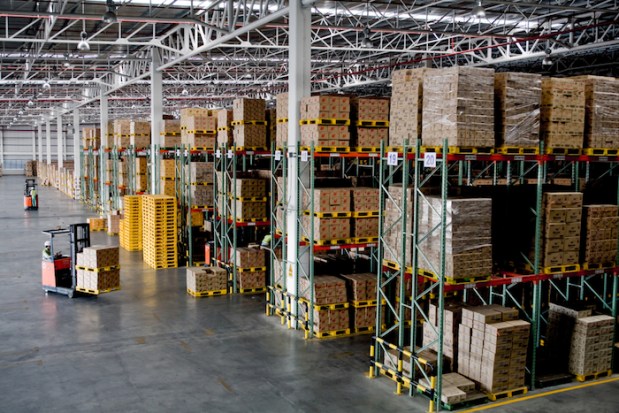If Vanishing Warehouse Space Is The Problem, What’s The Solution?

In the beginning of online shopping, it was brick-and-mortar brands that cried foul over the seemingly unfair fact that their new, nimble rivals didn’t have to contend with the costs of running a business in the physical world. Free from the chains of commercial rents, online retailers had a lighter — though by no means easier — path to profitability than some of their B&M counterparts, and many like Amazon still occupy those market perches today.
It must be with a great deal of schadenfreude, then, that in-store brands are seeing the lifeblood of online retail — the fulfillment center — experience a bubble like nothing ever before.
The bad news for online brands that rely on same-day and express shipping came down this week from commercial real estate firm CBRE. In a report, Chief Economist for the Americas Jeffrey Havsy explained that, at the close of Q2 2016, available retail warehouse space had fallen to just 8.8 percent of overall capacity. Not only is that the 25th quarter in a row that retailers have been buying up floor space in fulfillment centers faster than contractors can build it, but out of the 57 major metropolitan markets Havsy and CBRE looked at, 37 posted net losses in retail warehouse availability.
“The good economy and the change in distribution logistics has led to an increased demand,” Havsy deadpanned to The Wall Street Journal. “Now, it’s more about having the right products near the customer, and that means more points of distribution rather than a single point of distribution.”
Having the right products in the right places is easier said than done when the warehousing market is presenting fewer and fewer options for retailers in need. Advice like that might even come off as sanctimonious to brands that are clawing tooth and nail to keep their heads above the waters of their profit margins, only to find out that shrinking warehouse availability means ballooning rates.
Taking hammer to nail and building more fulfillment centers isn’t quite within retailers’ control, but making more efficient use of the warehousing space they do have most certainly is — if they can agree on what constitutes “more efficient use” at all.
For the Amazons of the world — scratch that — for Amazon, these interventions take on a decidedly high-tech approach. The eCommerce giant is one of the only merchants in the world that’s been able to roll out a fleet of automated robots in its fulfillment centers, and it’s done so with 30,000 Roomba-like devices manufactured by Kiva — now an Amazon-owned property. The Kiva bots can’t do everything required of a retail warehouse on their own, but they can handle brute-force tasks, like moving and aligning shelves of products, to make subsequent human actions all the more efficient.
Buying a battalion of automated helpers is really a privilege of the elite in the retail world, though, so while the future of warehousing technology almost certainly lies in robotics, retailers under pressure in the here and now need less financially and technically intensive ways to make the most of their increasingly expensive warehouse real estate.
Fortunately, Newegg may have found it. On Friday (July 15), the online electronics and hobby shop is opening a fulfillment center with a twist outside Toronto. While 77,200 of the 81,000-square-foot warehouse will be used for the usual storage and shipping of Newegg’s online orders, the other 3,800 square feet will be taken up by the “Hybrid Centre,” a part-storefront, part-showroom where customers can come to pick up orders, participate in educational seminars and compete for giveaways during special events.
In short, Newegg has taken a tiny slice of a larger fulfillment center and turned it into a potential for monetization where none existed before.
It’s far from the ideal solution, and it’s not going to push retailers into the black if they’re already drowning in the red from their logistics costs. But if brands have decided to wait for the automation revolution to get their warehousing costs under control, they might not last long enough to see it.
